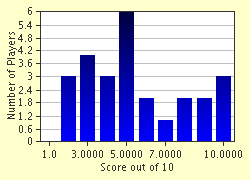Quiz Answer Key and Fun Facts
1. Buenos Aires was founded by which Spanish explorer who has another Argentine city named for him on February 2, 1536?
2. Why did the original settlement of Buenos Aires have to be abandoned in 1542?
3. Although Buenos Aires was dependent on trade with Spain, which other industry flourished in the city from its new founding in 1580 until independence?
4. What is the Spanish word for people who lived in Buenos Aires? Although it was originally used as a general term for the people, it soon became associated with the Argentine independence movement.
5. In 1806, which foreign country seized Buenos Aires and successfully held it for a month and a half?
6. Who was the Spanish viceroy who fought against Napoleon at Trafalgar, was removed from office on May 25 1810, and whose overthrow led to the War of Argentine Independence?
7. Argentina became its own nation on July 9, 1816 during the Congress of Tucuman in Buenos Aires.
8. What is the name of the presidential mansion of Argentina that was completed in its current location at Balcare 50 in 1898?
9. Which group of people bombed the Plaza de Mayo on June 16, 1955 in an anti-Peronist demonstration?
10. The Mothers of the Plaza de Mayo first marched in 1977 for what reason?
Source: Author
Joepetz
This quiz was reviewed by FunTrivia editor
bloomsby before going online.
Any errors found in FunTrivia content are routinely corrected through our feedback system.

